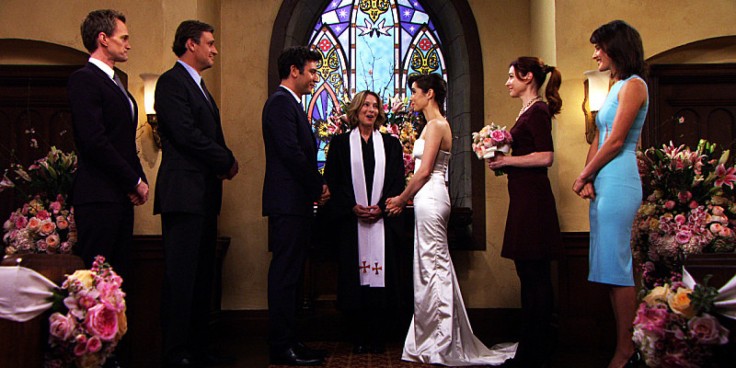Runner-up on the list of most controversial finales ever after what is perhaps the ending of one of the most mainstream shows ever created —Damon Lindelof and J. J. Abram’s Lost—, is, unequivocally, the How I Met Your Mother series finale. Even years after its airing, the finale continues to haunt the memories of so many fans who, as driven to expect, hoped for a finale that was far more conclusive, exuberant and overall fair both to the characters and to the audience. Because, regardless of whether the finale can be considered a classic ‘happy end’ or not, there is one thing that is plain clear: in the span of two hours, the writers brilliantly accomplished to tear down, and absolutely butcher any kind of character development suffered through nine years worth of episodes. In the final two-parter, How I Met Your Mother drastically managed to change the theme and message it had spent years trying to get across to the audience with a feeble excuse that “it’s life”. And that, despite what Carter Bays and Craig Thomas want to make us believe, is a cheap trick in order to excuse a severe lack of narrative control over their own show.
But, to be fair, they’re not entirely wrong. A finale in which Ted —the show’s overly-romantic, Ross-from-Friends-caricature main character— reduced what had been build up to be the love of his life to simply just another conquest as substitute for Robin —the one that got away— might’ve worked at the end of the show’s second season. Similarly, an ending where Barney Stinson, the character who has gone through an extraordinary character development, ended up alone with a child after a careless one-night-stand, would’ve worked like clockwork. And an ending with Marshal and Lily —the show’s only stable couple who much too often mimicked Chandler and Monica— happy and with kids seemed to match up perfectly. But that was after two years. Nine years worth of character development later, when life, narrative and time itself had completely demolished any opportunity of a Robin and Ted romance in favor of a Robin and Barney one, the finale becomes, not only illogical but unfair.

Because, in the span of two short hours, each and every single one of these characters’s development was thrown away and discarded without a second thought. Barney and Robin filed for divorce in two minutes citing the classic, mundane ‘irreconcilable differences’ argument prompted by a reformed Robin back in full swing in her workaholic frenzy after years of learning to put life first. Like an alcoholic who has to renounce to his six-month sobriety coin, Barney went back to his womanizing ways despite his constant attempts to stray away from them. And Ted —poor romantic, love-struck Ted— was reduced to what most understood as a complete and utter jerk. From Prince Charming to World’s Worst Husband —what a chatch! And with this destruction of character came a destruction of all the values the show stood for.
How I Met Your Mother, despite its mysteriously promising title, could’ve ran nine solid years without introducing the mother and it would’ve still been a satisfactory show —had it been carried out decently. The show was never about the end goal, it was always about the story that lead you there. That’s what sitcoms are: self-contained, traditional, and very rarely jeopardizing towards the status quo. Not revolutionary, but they get the job done.
HIMYM proved loyal to this pattern. Despite the attempts at revolutionary concepts —a lesbian couple? Put this in the books!— it cemented traditional values: marriage, children, stable jobs and living merrily until you’re eighty and decide to take care of your backyard —which now features a home garden! At the end of the day, it had a moral. It taught the audience that no matter how many times one was to fail, there was always a reward at the end —long live the American Dream. And Ted was the concrete embodiment of that thought. Ted, who had been left at the altar. Ted, who watched bittersweetly as every one of his friends got married before him. But, as an audience, we were with Ted. We wanted it to work out —nay, we knew it would work out. Because there was one thing the show guaranteed: we were going to meet the mother, ergo, we were getting our happy ending. But with the obliteration of Ted’s character development, and with the subsequent obliteration of every other character’s development, the show became nothing more than an excuse for indecision and despair. The show’s lack of respect towards this development shifted its moral. It was no longer, “Kids, this is the story of how I met the love of my life”, but rather, “Kids, this is the story of how I’ve always had unresolved feelings for your Aunt Robin.”

So yes, the mother died. She also sang La vie en rose and proved to be, in every way, perfect for our troubled, romantically misunderstood hero. And she was also mother to two, and Best Bride Ever, and every other amazing commendation the show’s writers decided to prize her with. And all of that made sense. The mother’s death prompted Ted’s telling of their love story, which solidified the show’s narrative logic. The mother died, we cried, it was over. And somehow, we were okay with the fact that she passed.
What was not okay was everything else.
Me? I’d rather stand with Ted and Tracy —T. M. and T. M.— under that yellow umbrella on that rainy train platform.
And that, kids, is the true story of How I Met Your Mother.


Deja un comentario